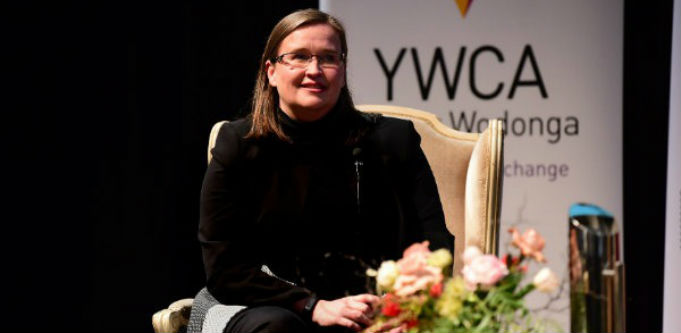
Kate Jenkins, Australia's sex discrimination commissioner.
The sex discrimination commissioner Kate Jenkins has released findings today confirming workplace sexual harassment in Australia is widespread, pervasive and has increased significantly in the last six years.
“Sexual harassment is a problem that affects millions of Australians, particularly in our workplaces,” Jenkins says. “One in three people surveyed told us they have been sexually harassed at work in the last five years.”
Almost two in five women and just over one in four men said they have been sexually harassed at work since 2013.
“These figures are unacceptable and have increased significantly since the last survey in 2012, which found one in five people told us they had experienced sexual harassment in the workplace in the previous five year period,” Jenkins says.
“Worryingly, people aged 18 to 29 were more likely than those in any other age groups to tell us they have experienced workplace sexual harassment.”
Jenkins will detail the Australian Human Rights Commission’s report Everyone’s business: Fourth national survey on sexual harassment in Australian workplaces at the National Press Club today.
Despite the surge in public concern about sexual harassment generated by the #MeToo movement, the results reveal that formal reporting of workplace sexual harassment remains low. Fewer than one in five people made a report or complaint.
“We know from our research that many people are afraid to report their experiences of unwelcome sexual conduct out of fear that they won’t be believed, that it’s not worth it, that they’ll be ostracised and that it could damage their career,” Jenkins says.
“It’s also worrying that almost half of those who did make a formal report said nothing changed at their organisation, as a result of the complaint.”
The survey results provide industry-specific data, with reports of workplace sexual harassment being alarmingly high in the information, media and telecommunications industry, where 81% of employees have experienced it in the last five years. It is particularly prevalent in arts and recreation services, electricity, gas, water and waste services and the retail trade sector as well.
“Unwelcome sexual conduct on this scale in the workplace not only causes distress to workers and colleagues, it impacts workplace productivity and impedes career progression, which has an economic impact on businesses and families,” Jenkins said.
The survey results will inform the Australian Human Rights Commission’s national inquiry into sexual harassment in Australian workplaces, which will begin public consultations later this month.
The inquiry is already accepting submissions and the commission is hoping to hear from individuals and organisations across the country about their experiences and ideas for change.
“We encourage all workplaces to examine the results for their industry, and review the effectiveness of their current sexual harassment prevention initiatives,” Jenkins says.
“I genuinely believe there is a desire for change and an unprecedented appetite for solutions. Our goal must be to ensure all Australians work in an environment that is safe, productive and free from sexual harassment.”
Today’s survey, however, makes clear what a gargantuan goal that is.
The article was originally published on Women’s Agenda. Read the original article.
NOW READ: “Glimmers of hope”: Five incredible global initiatives to benefit female entrepreneurs


COMMENTS
SmartCompany is committed to hosting lively discussions. Help us keep the conversation useful, interesting and welcoming. We aim to publish comments quickly in the interest of promoting robust conversation, but we’re a small team and we deploy filters to protect against legal risk. Occasionally your comment may be held up while it is being reviewed, but we’re working as fast as we can to keep the conversation rolling.
The SmartCompany comment section is members-only content. Please subscribe to leave a comment.
The SmartCompany comment section is members-only content. Please login to leave a comment.